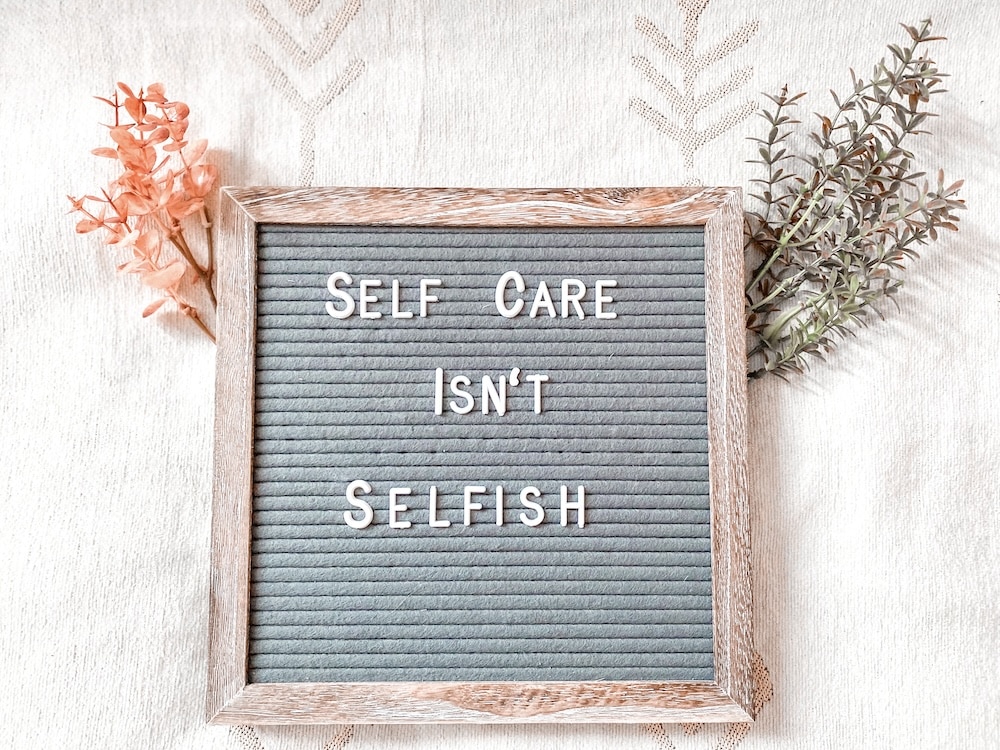Supporting someone who struggles with self-harm can be challenging and deeply personal. You may feel uncertain about the best way to help but are driven by a desire to make a difference. At Sterling Institute of Neuropsychiatry and Behavioral Medicine, we understand the complexities of self-harm and how difficult it can be to know where to start.
This guide offers practical, compassionate strategies rooted in evidence-based therapies like CBT and DBT, equipping you with tools to provide meaningful support. You can be a powerful source of comfort and encouragement by approaching this journey with empathy and understanding.
If you or a loved one is struggling with self-harm, don’t wait. Reach out to Sterling Institute today. Our team of experts is here to guide you through taking the next step.
Understanding Self-Harm: What It Is and Why It Happens
Before offering support, it’s necessary to understand what self-harm is and why someone might engage in it. Self-harm, or non-suicidal self-injury (NSSI), refers to deliberately injuring oneself to cope with overwhelming emotions or psychological distress. Through our specialized telehealth services, we work with clients to uncover the unique triggers and emotional needs that may lead to self-harming behaviors.

Reasons behind self-harm can include:
- Emotional release: Self-harm provides temporary relief from overwhelming emotions.
- Self-punishment: Many people use self-harm as a way to cope with guilt or shame.
- Control over emotions: Self-harm can create a sense of power, especially in stressful situations.
- Distraction from emotional pain: Physical pain is easier to handle than emotional distress.
At Sterling, our goal is to help clients understand these underlying factors in a safe, non-judgmental space so they can begin to replace self-harm with healthier coping skills.
Recognizing Signs of Self-Harm
Recognizing signs of self-harm can be the first step toward offering meaningful support. Self-harm behaviors are often hidden, and individuals may go to great lengths to conceal injuries or minimize the appearance of distress. At Sterling Institute of Neuropsychiatry and Behavioral Medicine, we guide families through identifying these behaviors and understanding when and how to step in. Early intervention can make a significant difference in providing the support needed for healing.
Signs to look out for include:
- Unexplained scars or injuries: Look for cuts, burns, bruises, or other wounds, often on accessible areas such as the arms, wrists, thighs, or abdomen. People who self-harm might attempt to hide or explain away these injuries, so it’s important to look out for patterns.
- Wearing concealing clothing: Long sleeves or pants in warm weather can sometimes indicate an attempt to cover injuries or scars. Pay attention if this behavior seems out of character or persistent over time.
- Frequent “accidents”: Someone who self-harms may explain away injuries with vague or unlikely reasons, like “I tripped” or “It was just an accident.” Consistent or repeated explanations for injuries may indicate a more significant issue.
- Isolation and withdrawal: Avoiding social situations or withdrawing from family and friends can be another indicator. The person may avoid situations where others might see their injuries or ask questions, choosing to isolate instead.
When you notice these signs, you must approach the person with empathy and understanding, as they may feel shame or fear. Sterling therapists can help you navigate these situations through personalized telehealth sessions, guiding you on how to reach out in ways that foster trust and openness.
How to Approach Someone Who Self-Harms
Approaching someone about self-harm requires patience, empathy, and a non-judgmental attitude. Sterling therapists are available to support family members as they navigate these delicate conversations, emphasizing that the goal is to create a supportive space where the person feels safe to share their experience.

1. Choose the Right Time and Place
Timing and environment matter. Find a private, calm setting where you can speak openly without interruptions or distractions. A peaceful environment makes the person feel more at ease and increases the likelihood of being receptive to your support.
2. Express Concern, Not Judgment
Focus on expressing genuine concern in a gentle and supportive way. Avoid language that could come across as accusatory or confrontational. Instead, you could say, “I’ve noticed you’ve seemed a bit distant lately, and I just want to make sure you’re okay.”
This approach conveys care and empathy, helping to prevent them from feeling defensive or judged.
3. Listen Without Interruption
One of the most powerful things you can do is simply listen. Avoid interrupting or offering solutions right away.
Sterling therapists guide loved ones to provide space for the individual to speak freely, allowing them to process their emotions without fear of immediate intervention. Listening without judgment can make them feel truly heard and understood, reinforcing your trust.
4. Validate Their Feelings
Validation is key. Acknowledging their emotions—even if you don’t fully understand why they feel the way they do—can go a long way in building a bridge of understanding. Saying something like, “I can see that this is painful for you, and that’s okay,” lets them know their emotions are valid and that they’re not alone in facing them.
Validation doesn’t mean you condone self-harm, but it shows you respect their experience and are willing to support them in finding healthier ways to cope.
Offering Support and Encouragement
Ongoing support, especially alongside professional guidance, is critical for helping someone struggling with self-harm. Our team at Sterling Institute is here to help loved ones learn how to be supportive while encouraging their friend or family members to seek professional care.
1. Encourage Professional Help
While support from friends and family is valuable, professional help is often essential. A therapist or psychiatrist can work with them to address the underlying issues driving the behavior. If the person is open to it, offer to help them find a mental health professional who specializes in treating self-harm, anxiety, or depression.
Telehealth therapy and psychiatry services, like those provided by Sterling Institute, provide convenient access to top-tier mental health support. Online therapists can offer flexibility and privacy, making it easier for individuals to begin their healing journey from the comfort of their own homes.
2. Identify Triggers and Coping Strategies
When someone is struggling with self-harm, it can be valuable to help them identify specific triggers. It may benefit them to consider the situations, emotions, or thoughts that make them want to harm themselves.
Once these triggers are identified, they can work with a mental health professional to develop healthier coping mechanisms. At Sterling, our therapists work closely with clients to recognize these triggers and develop healthier coping skills to move toward a healthier way of life.
3. Introduce Healthier Outlets for Emotional Expression
Self-harm often serves as a way to cope with intense emotions. Suggest alternative ways of expressing these feelings, such as:
- Creative outlets: Art, journaling, music, or writing can provide a safe way to release and express emotions.
- Physical activities: Exercise, yoga, or meditation can help reduce stress and create a sense of calm.
- Social support: Connecting with friends, family, or support groups can reduce feelings of isolation.
Encourage them to explore these alternatives while reminding them that it’s okay to reach out for help.
Supporting Yourself While Helping Others
While supporting someone else, it’s also important to care for yourself. Our therapists at Sterling often remind families and loved ones that setting boundaries and seeking personal support are crucial to being a supportive ally.

- Set boundaries: Helping someone doesn’t mean you’re responsible for their actions. Setting healthy boundaries can prevent emotional burnout.
- Seek support: Consider reaching out to a therapist or support group. Many of Sterling’s clients benefit from family or individual sessions focused on learning how to provide support while managing their own emotions.
- Engage in self-care: Prioritizing activities that help you recharge will make you a stronger support system.
Why Professional Help Matters
Healing from self-harm often requires professional intervention, as the underlying causes can be complex and deeply rooted in emotional and psychological patterns. At Sterling Institute of Neuropsychiatry and Behavioral Medicine, we provide compassionate telehealth therapy tailored to each individual’s needs, offering structured support and evidence-based treatment methods.
- Cognitive-behavioral therapy (CBT) is a central component in treating self-harm behaviors. Cognitive-behavioral interventions for self-harm help individuals identify and replace self-harming thoughts and behaviors with healthier coping strategies, working to change the thought patterns that often lead to self-injury. Cognitive Behavioral Intervention for Self-Harm, specifically, focuses on addressing the triggers and reinforcing positive behaviors that counteract the urge to self-harm, showing strong efficacy in reducing self-injurious behaviors over time.
- Dialectical behavior therapy (DBT) is another therapeutic approach that has proven effective, particularly in teaching skills like emotional regulation, distress tolerance, and mindfulness. DBT’s structured methods help individuals manage intense emotions that might otherwise lead to self-harm, offering practical tools to face challenging moments.
- Medication management can also play an important role when self-harm is linked to underlying mental health conditions, such as anxiety or depression. In such cases, carefully monitored medication can alleviate symptoms, creating a more stable emotional foundation to support therapy.
With Sterling Institute’s telehealth services, clients can access these impactful therapies from the comfort of their homes, ensuring that distance or other barriers do not prevent them from receiving the care they need. This approach provides clients with a safe, private, and convenient way to begin their healing journey, supported every step of the way by experienced mental health professionals.
Take the First Step Toward Healing
Supporting someone who struggles with self-harm can be complex, but you don’t have to face it alone. At Sterling Institute of Neuropsychiatry and Behavioral Medicine, our telehealth therapy and psychiatry services provide compassionate, specialized care to guide individuals toward healthier coping strategies. We’re here to help individuals and their families navigate the path to recovery with evidence-based support and professional expertise.
If you’re ready to make a difference in your loved one’s journey to healing, reach out to Sterling today. Together, we can create a supportive and understanding environment to help them move forward.
References
1. Klonsky, E. D., Victor, S. E., & Saffer, B. Y. (2014). Nonsuicidal self-injury: what we know, and what we need to know. Canadian journal of psychiatry. Revue canadienne de psychiatrie, 59(11), 565–568. https://doi.org/10.1177/070674371405901101
2. Slee, Nadja, Nadia Garnefski, Rien van der Leeden, Ella Arensman, and Philip Spinhoven. “Cognitive-Behavioural Intervention for Self-Harm: Randomised Controlled Trial.” British Journal of Psychiatry 192, no. 3 (2008): 202–11. https://doi.org/10.1192/bjp.bp.107.037564.
3. Wadman, R., Clarke, A., Sayal, K., Armstrong, M., Harroe, C., Majumder, P., Vostanis, P., & Townsend, E. (2019). A sequence analysis of patterns in self-harm in young people with and without experience of being looked after in care. Frontiers in Psychology, 10, 2916. https://doi.org/10.3389/fpsyg.2019.02916

